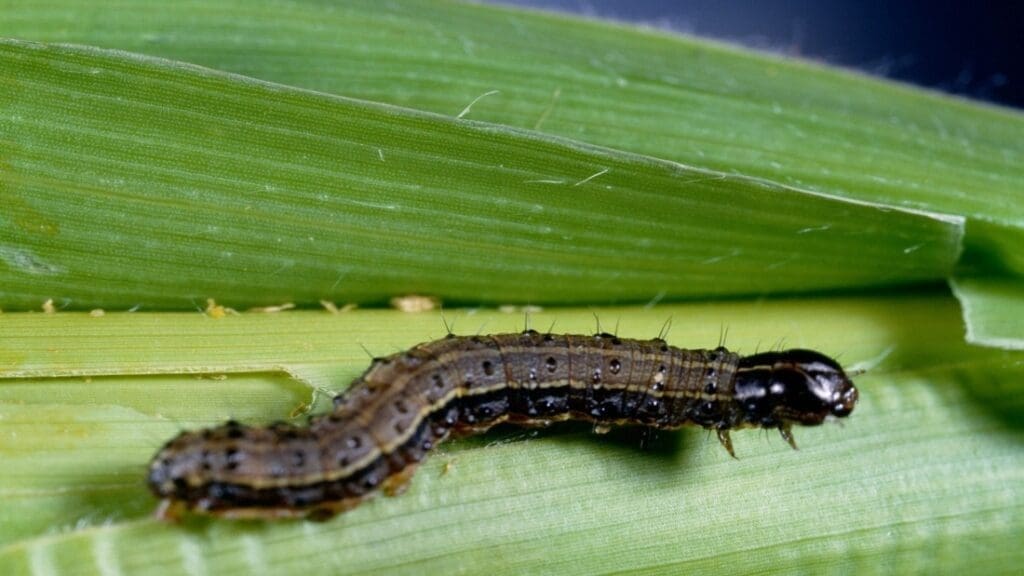Recent rain has helped Kansas wheat and alfalfa fields recover from army cutworm damage. As these pests begin heavy feeding, K-State entomologist Jeff Whitworth reminds growers of their life cycle. Moths emerge in May, briefly gather near lights, then migrate to the Rockies. They return to Kansas fields in late August through early September to lay eggs.
“When they get back to Kansas, they start depositing eggs which will hatch in the fall. Those adults pass on in October or November, and every year is a little different based on the temperature. When those eggs are in the soil, they’ll hatch within a month or two, and those small larvae will come out in December or January and they’ll start feeding on whatever crops are there,” explained Whitworth.
Whitworth advises growers to scout fields now for army cutworms, which are currently about a quarter-inch long. While still small, they’re easier to spot than when newly hatched. Most of their feeding is still ahead, and damage will increase as they grow. Because of recent moisture, many wheat and alfalfa fields can now outgrow the damage.
He says treatment decisions depend on wheat stand quality. In thin stands, just one or two army cutworms per square foot may justify control. In thicker stands, it might take 4 to 8. While they can be managed, producers need to scout fields now through mid-May, when cutworms do most of their growing, feeding, and damage before starting their cycle again.













